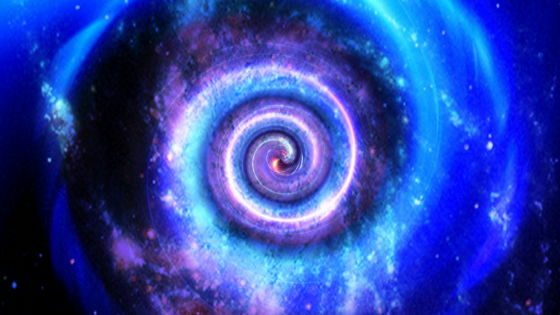The theory of entropy suggests why the universe is full of spirals and vortexes

In nature, there are many spiral, spiral, or ring structures, such as plant vines, whirlpools, and the double helix structure of DNA. New research on
A covariant tapestry of linear GUP, metric-affine gravity, their Poincaré algebra and entropy bound - IOPscience
https://iopscience.iop.org/article/10.1088/1361-6382/ad3ac7

Why does nature love spirals? The link to entropy
https://phys.org/news/2025-03-nature-spirals-link-entropy.html
In the history of human knowledge, there have been many paradigm shifts that dramatically changed the way we see things. A research team led by Dr. Aneta Vojnal, who studies gravity and quantum interactions at the Complutense University of Madrid in Spain, and Ahmed Farag Ali, a theoretical physicist at Essex County College in the United States, cites the Bekenstein boundary proposed by Israeli physicist Jacob Bekenstein as one such paradigm shift.
The Bekenstein boundary is the idea that any physical system does not have infinite entropy, but rather that there can only be a finite amount of entropy within a finite domain, constrained by energy and the smallest sphere that can contain it. Entropy has long been considered an abstract measure of disorder, but the Bekenstein boundary suggests that it is a finite quantity that is tied to the fabric of space and time.
Subsequent attempts to generalize the Bekenstein boundary have led to a reformulation by Rafael Bousso, a professor at the University of California, Berkeley , that links the entropy constraint to the area of the enclosing sphere rather than to the energy. Bousso arrived at this theory using a gravitational stability condition in which the Schwarzschild radius , at which light cannot escape, does not exceed the radius of the sphere.
While these steps were mathematically consistent, Vojnal and his colleagues point out that Bousso's approach does not accurately represent the Bekenstein boundary: by replacing energy with the area of a sphere, Vojnal and his colleagues take issue with it, removing the dynamical nature of the relationship between entropy and space-time.
So in a paper published in Classical and Quantum Gravity , a peer-reviewed journal on gravitational physics and space-time theory, Vojnal and his colleagues formulated the Bekenstein boundary in terms of relativistic mass while preserving energy, which they argue represents entropy not as a bounding sphere, but as a toroid , an enclosing sphere with an inner radius equal to the Schwarzschild radius and an outer radius of the smallest possible bounding sphere.

The team's arrival at the toroidal structure was not arbitrary, but was motivated by fundamental structures observed throughout the universe. 'Nature does not favor perfect spheres, but instead favors helices, vortices, and circular flows,' Vojnal and his team wrote. 'Galaxys do not form as perfect spheres, but are wound into majestic spirals. DNA does not form straight strands, but twists into a double helix. Water, air, and even plasma in the most extreme cosmic conditions follow paths of rotation and curvature. So why not entropy, perhaps the most fundamental organizing principle of the universe?'
In addition, in the world of quantum mechanics, there is a principle called
This has far-reaching implications for physics, as well as our understanding of the motion of hurricanes, ring motion, ocean wave curvature, electromagnetic field patterns, and even the interactions of subatomic particles in the universe. 'There is something universal about spirals, and they are embedded in the way energy, matter, and space evolve. Rings are not just shapes, they embody motion, evolution, and time itself,' Vojnal and his team say.
The lesson that can be drawn from their findings, Vojnal and his colleagues said, is that 'the world is not chaotic, nor is it governed by blind chance. There is order, and it's waiting to be discovered.'

Related Posts:
in Science, Posted by log1h_ik







